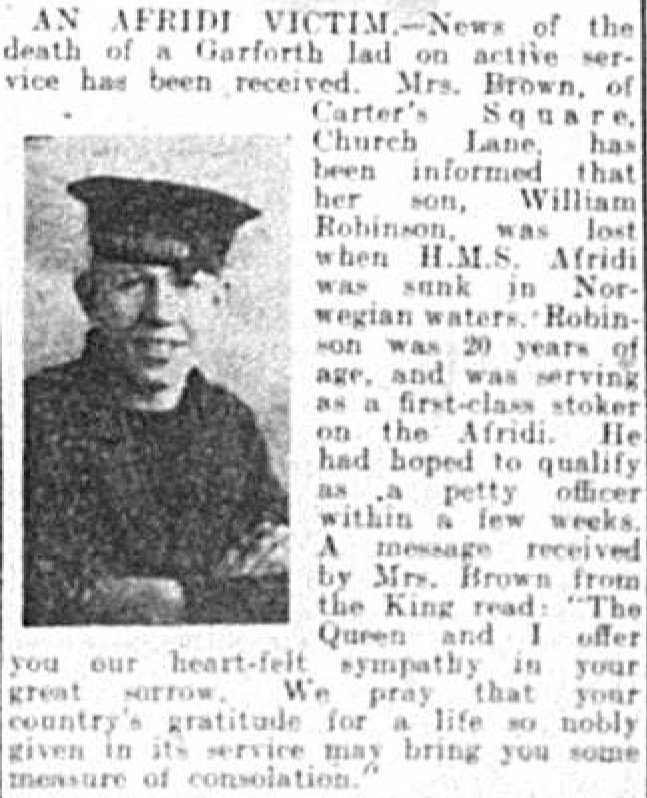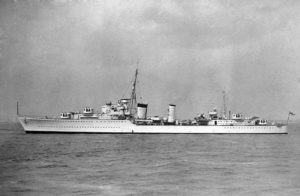
Served in Royal Navy on board HMS Afridi
He died, aged 19, on 3rd May 1940 when the ship was sunk off Norway. his mother ,Mrs Brown of Carter’s Sq Church Lane, was informed.
Remembered with Honour Plymouth Naval Memorial
On 1 May 1940, Afridi was deployed with Fleet units off Namsen Fjord pending the evacuation of the last 5,400 of the 12,000 Allied (British and French) troops in Central Norway, climax of the doomed campaign to capture Trondheim. On 2 May at Namsos she embarked troops of the Royal Lincolnshire Regiment and transferred them to the French auxiliary cruiser El Kantara and in the few dark hours of 3 May embarked troops of the Hallamshire Battalion of the York and Lancaster Regiment. Afridi waited for the 36-man rearguard to reach Namsos. Some shelled transport vehicles and munitions where abandoned quayside. Afridi was the last ship to leave the port. After she joined the Shetland-bound convoy, the troopships and their escorts came under a series of air attacks. At 10.00hours the French Guépard-class destroyer Bison received a direct hit through the bridge, her forward magazine exploded and she began to sink by the bow. Afridi, and fellow destroyers Imperial and Grenade went to her aid and fought off two more air attacks while rescuing survivors. Imperial and Grenade left to catch up with the convoy, which Afridi also did at midday after sinking the hulk of Bison by gunfire. When she rejoined the convoy at 1400, another dive bombing attack developed. Afridi was targeted by Ju 87 Stukas diving from each side, making evasive manoeuvres ineffectual. She was hit by two bombs, one passing through the wireless telegraphy office and exploding beside No. 1 Boiler Room, the second also hitting the port side just forward of the bridge and starting a severe fire at the after end of the mess decks. Imperial came alongside to port and Griffin to starboard to take aboard survivors, including Captain Philip Vian. At 1445 hours, Afridi capsized and sank bow-first on this, the second anniversary of her commissioning. Fifty-three of her ship’s company perished including one officer; in addition thirteen soldiers—the only casualties among the whole force of 12,000 troops evacuated from Åndalsnes and Namsos—and thirty-five of the sixty-nine Frenchmen she had picked up from Bison.


